¡Hola mis queridos amigos de Hive amantes de la ciencia!
Nuestro cuerpo está compuestos por diversas células que garantizan su funcionamiento para darnos vida, existen diversos cambios en su estructuras y funcionamiento, estos vienen dados por la adaptación celular, las células van actuar como respuestas a diversos estímulos ya sean fisiológicos así como también patológicos, estos se pueden producir sin causar alguna lesión o muerte, conservando su vitalidad y función, sin embargo los mismos pueden generar ciertas consecuencias en la células lo que conlleva a que el metabolismo de las misma se modifique para que puedan sobrevivir en nuevos medios o cualquier circunstancia que puedan presentar.
Our body is composed of various cells that ensure its functioning to give us life, there are several changes in their structures and functioning, these are given by cell adaptation, the cells will act as responses to various stimuli whether physiological as well as pathological, these can occur without causing any injury or death, preserving its vitality and function, however they can generate certain consequences in the cells which leads to the metabolism of the same is modified so that they can survive in new media or any circumstances that may arise.

Las células al ser unifuncionales, tienen diversas funciones y además tienen la capacidad de crecer, multiplicarse y morir, por lo que algunas modifican su función, logrando también un déficit de funcionamiento así como también un exceso del mismo, también pueden tener un crecimiento anormal, conoce mediante esta publicación cada uno de los cambios adaptativos de las células.
Cells, being unifunctional, have diverse functions and also have the capacity to grow, multiply and die, so some modify their function, achieving also a deficit of function as well as an excess of it, they can also have an abnormal growth, know through this publication each of the adaptive changes of the cells.
¿Como se va clasificar la adaptación celular?
How is cellular adaptation to be classified?
Hiperplasia Es un aumento en la cantidad de números en las células de cualquier órgano o tejido, por lo que va producir un aumento del volúmen en los órganos y téjidos. La hipertrofía tendrá factores de crecimiento también receptores que ayudarán en la inducción de genes, regulación del ciclo celular, así como también van a proliferar células, cabe que tendrá de la hipertrofía esta la hormonal que es un aumento de la capacidad del funcionamiento de las hormonas incrementando el crecimiento en téjido glándular, también esta la compensatoria la cual es un aumento de la masa tisular debido a la perdida celular, por último la hiperplasia patológica, las cual se produce por estímulos hormonales en el exceso de factores de crecimiento, como ocurre en la hiperplasia endometrial, próstata u ovarios.
Hyperplasia: It is an increase in the number of cells in the cells of any organ or tissue, which will produce an increase in the volume of organs and tissues. Hypertrophy will have growth factors and receptors that will help in the induction of genes, regulation of the cell cycle, as well as proliferation of cells, it should be noted that hypertrophy will have the hormonal which is an increase in the ability of hormones to function increasing the growth in glandular tissue, There is also compensatory hypertrophy, which is an increase in tissue mass due to cellular loss, and finally pathological hyperplasia, which is produced by hormonal stimuli in excess of growth factors, as occurs in endometrial hyperplasia, prostate or ovaries.
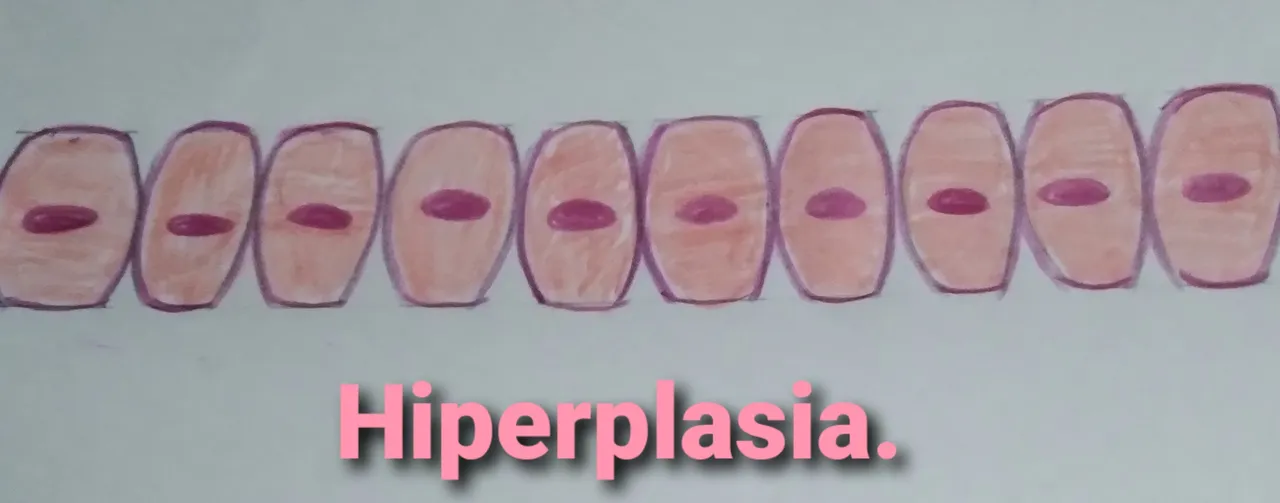
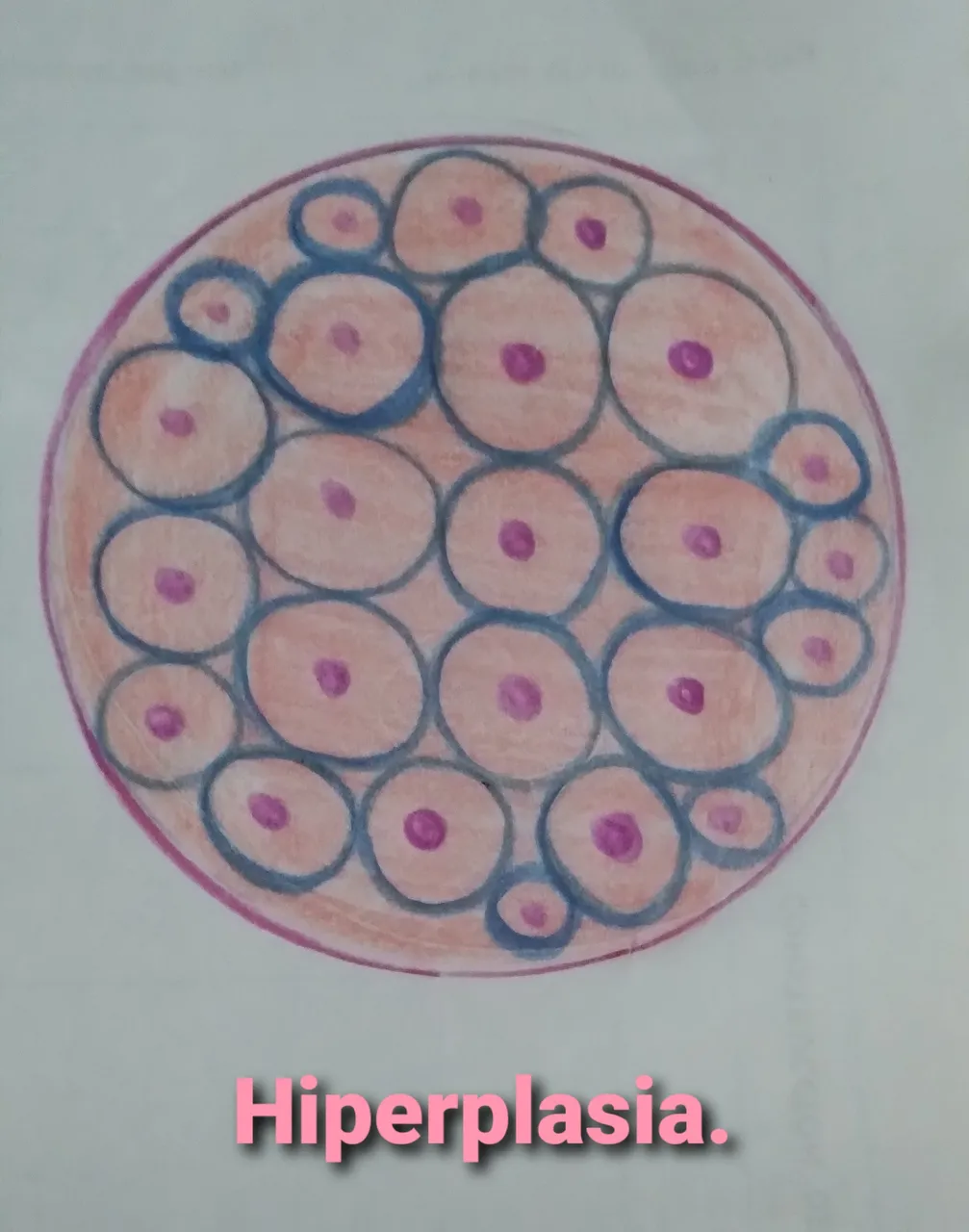
Hipertrofía: Será un aumento del tamaño de la células, asi como también de su volumen, por lo que va ocasionar que órgano crezca en cuanto su tamaño, estas células no serán nuevas sino, mayores por el exceso de componentes que poseen (Ocurre en las fibras presente en el miocardio). La hipertrofía se clasifica en fisiológica la cual tendrá una alta demanda de funcionamiento en los músculos estriados y también lisos, así como aquellos que poseen una alta estimulación hormonal como el útero, mamas y próstata, por último esta la patológica que afecta de manera grave al corazón debido a la sobre carga que puede ser causada por la hipertensión u válvulas defectuosas.
Hypertrophy: The cells will not be new but larger due to the excess of components they have (It happens in the fibers present in the myocardium). Hypertrophy is classified as physiological which will have a high demand for functioning in striated and smooth muscles, as well as those that have a high hormonal stimulation as the uterus, breast and prostate, and finally there is the pathological that seriously affects the heart due to the overload that can be caused by hypertension or defective valves.

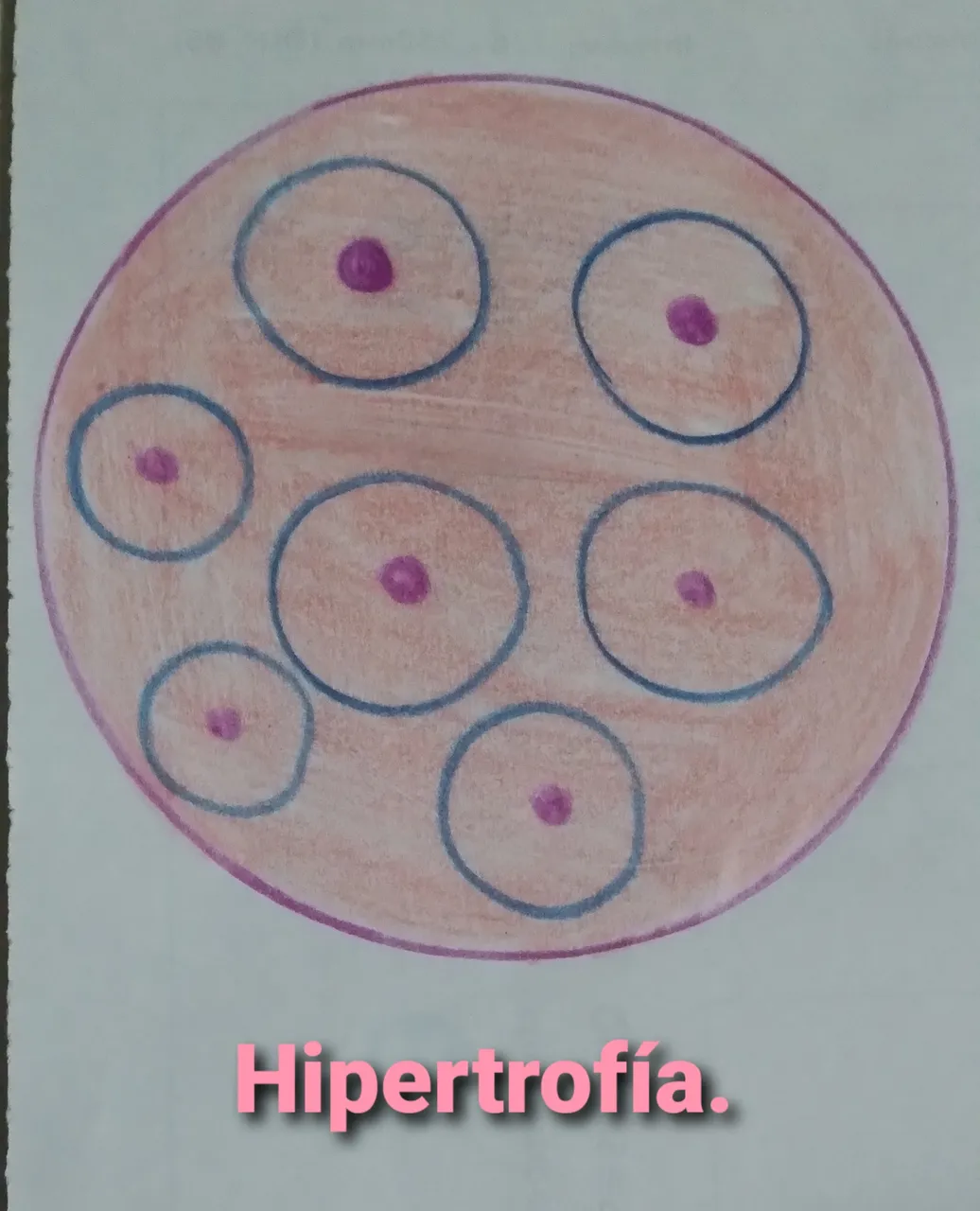
Atrofia: Se conoce a la disminución en el tamaño de las células , debido a la perdida de sustancias celulares, por lo que se puede acompañar un incrementos de organelos citoplasmaticos. Dentro de esta Atrofia se encuentra la fisiológica que se dará en el inicio del desarrollo como útero y mamas, cabe resaltar que también esta la patológica que se dará por el aumento de algún estímulo.
Atrophy: This is known as the decrease in cell size due to the loss of cellular substances, which may be accompanied by an increase in cytoplasmic organelles. Within this atrophy is the physiological that will occur at the beginning of development as uterus and breasts, it should be noted that there is also the pathological that will be given by the increase of some stimulus.
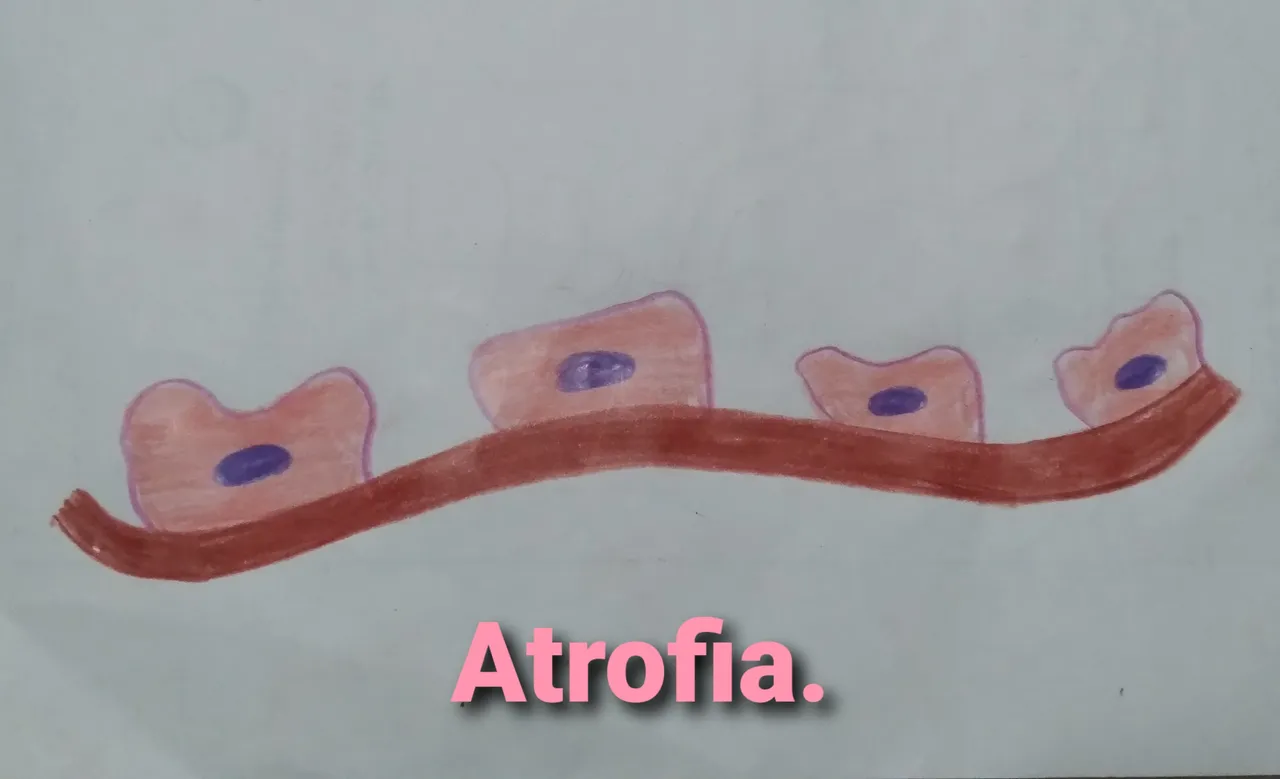
Metaplasia: Es cuando la células van a sufrir cambios totalmente irreversibles en la célula adulta, no serán capaces de volver a su función original. Esto será por la sustitución de adaptación en las células que se vuelven sensibles y no son capaces de soportar el ambiente difícil donde se pueden encontrar.
Metaplasia: It is when the cells will undergo totally irreversible changes in the adult cell, they will not be able to return to their original function. This will be due to the substitution of adaptation in the cells that become sensitive and are not able to withstand the difficult environment where they can be found.
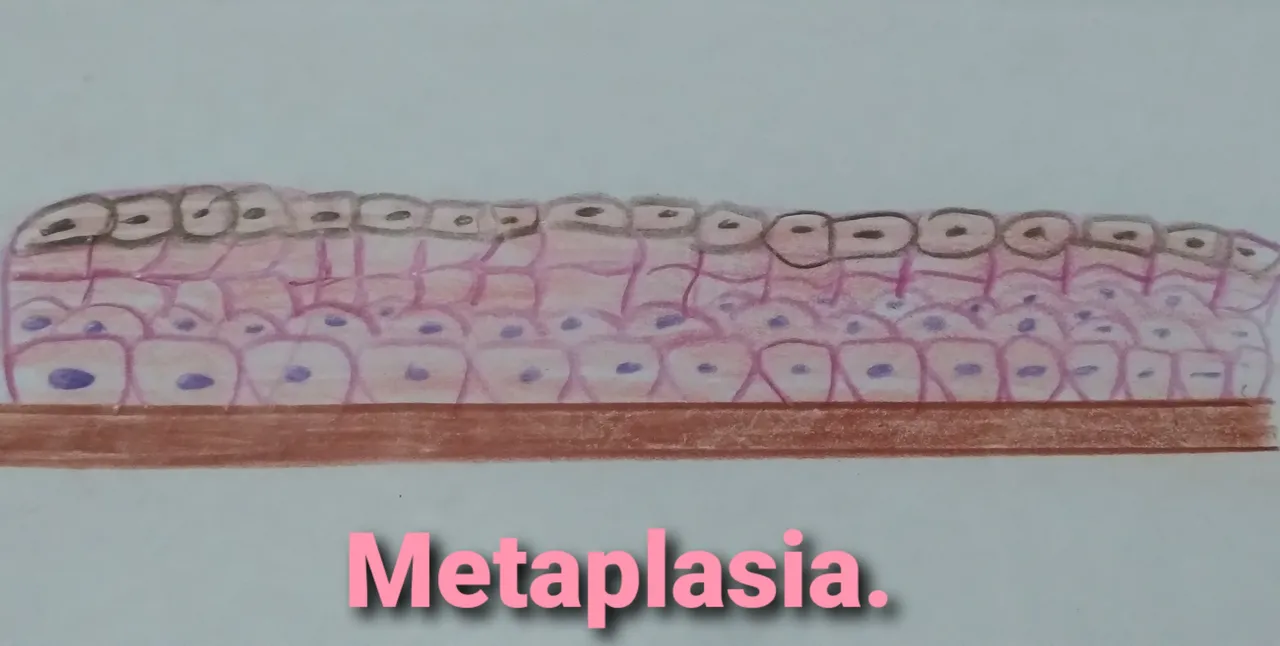
Clasificación del crecimiento y desarrollo:
Classification of growth and development:
Displasia: Será una alteración en las células que están adultas, que pueden producir variación en el volumen, también en su forma y organización. Las células van a tener un crecimiento bien organizado, cabe destacar que dentro de la displasia se clasifican leve reversible , moderada reversible, así como también irreversible.
Dysplasia: It will be an alteration in the cells that are adult, which can produce variation in volume, also in its shape and organization. The cells will have a well organized growth, it should be noted that within the dysplasia are classified as mild reversible, moderate reversible, as well as irreversible.

Anaplasia: Es un cambio regenerativo el cual va ocasionar alteraciones en el volúmen, forma y organización de las células, cabe destacar que estos cambios también son irreversibles como es el, pleomorfismo, morfología nuclear, células gigantes entre otras.
Anaplasia: It is a regenerative change which will cause alterations in the volume, shape and organization of the cells, it should be noted that these changes are also irreversible, such as pleomorphism, nuclear morphology, giant cells, among others.
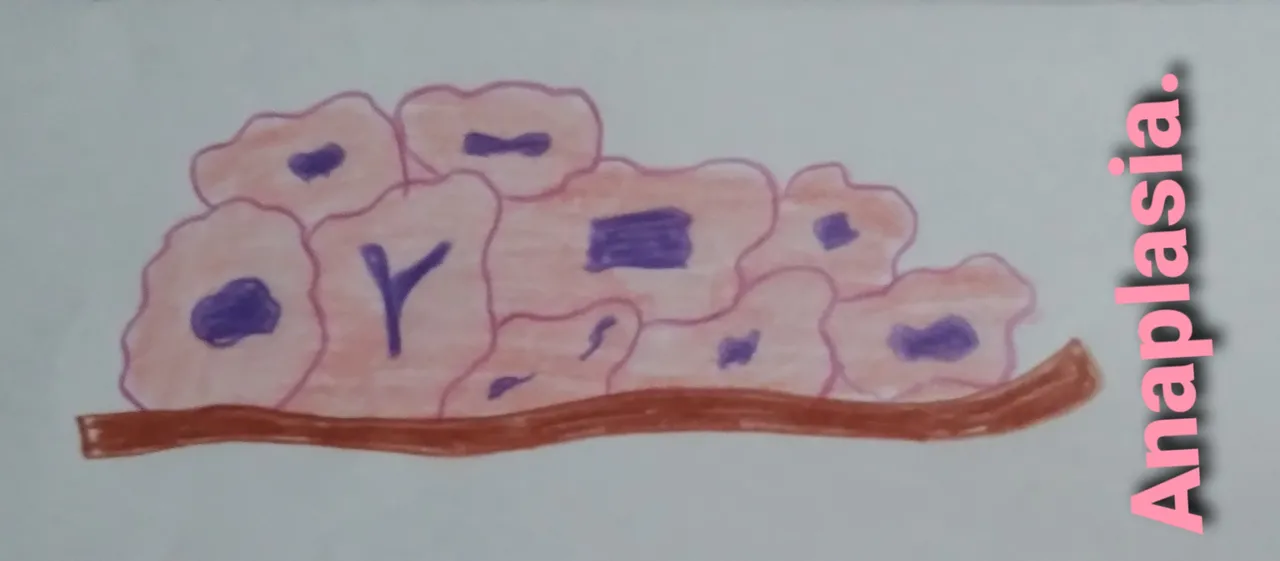
Hipoplasia: Es cunado ocurre el desarrollo incompleto de algún órgano, debido a la disminución de las células, por ejemplo como lo es la amelogenesis (cuando hay una pérdida del esmalte) también ocurre en la dentina.
Hypoplasia: Incomplete development of an organ, due to the reduction of cells, such as amelogenesis (when there is a loss of enamel) also occurs in the dentin.
Agenesia: Es cuando ocurre una ausencia total de algún órgano así como también una falla del desarrollo en un téjido por ejemplo anodoncia (ausencia de un diente).
Agenesis: It is when there is a total absence of any organ as well as a failure of development in a tissue, for example anodontia (absence of a tooth).
Neoplasias embrionaria: Estas se van a desarrollar durante el desarrollo de los órganos y téjidos, así como también en algunos restos del órgano o tejido cuando ya este alcanza su desarrollo.
Embryonal neoplasms: These will develop during the development of organs and tissues, as well as in some remains of the organ or tissue when it reaches its development.
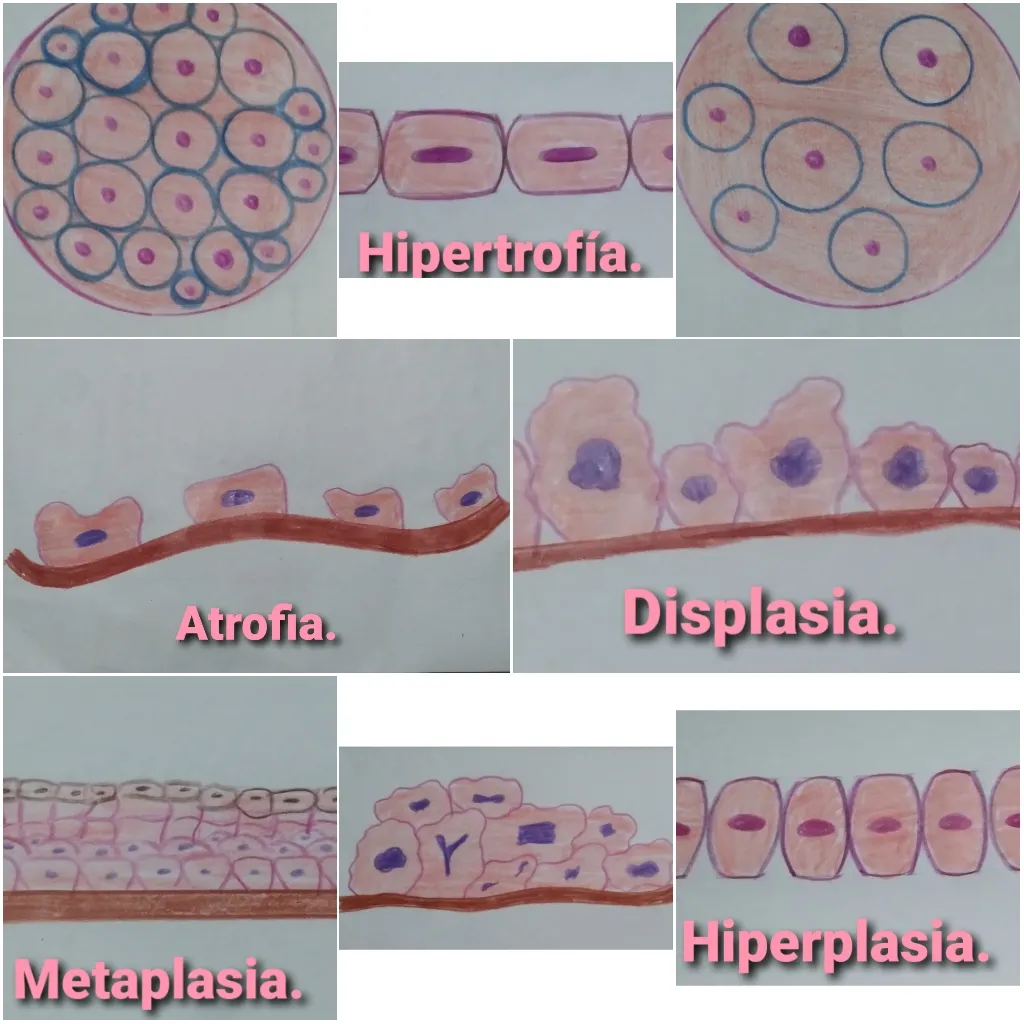
Por último es importante tener en cuenta que la adaptación celular es parte importante del comportamiento que van a tener las células en nuestro organismo, espero este tema te haya gustado mucho y pueda generar en todos un aporte o conocimientos, hasta pronto amigos amantes de la ciencia.
Finally it is important to note that cell adaptation is an important part of the behavior that will have the cells in our body, I hope this topic has pleased you very much and can generate in all a contribution or knowledge, see you soon friends lovers of science.
Referencia Informativa: Información obtenida y analizada por mi gracias de Patología I, Universidad del Zulia Facultad de odontología.
Information obtained and analyzed by my thanks to Pathology I, University of Zulia School of Dentistry.

 créditos @doze
créditos @doze


Texto traducido en Deelp